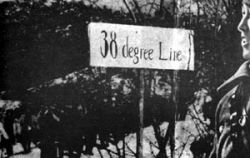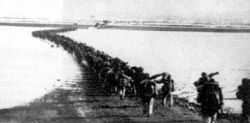Chinese People's Volunteer Army
On June 25, 1950, the Korean civil war broke out. Two days later, the US navy and air force were dispatched to interfere in Korea's internal affairs, and the navy's 7th Fleet was ordered to invade and occupy Taiwan. On June 28, Zhou Enlai, on behalf of the Chinese government, issued a statement condemning the invasion and occupation of Taiwan and US interference in Asian affairs.
Disregarding the Chinese government's warning, the US forces continued and crossed the 38th parallel line, and the US air force penetrated the northeast airspace of China, bombing and strafing, and posing a serious threat to China's security.
On October 1, North Korean leader Kim Il Sung sent a letter to Mao Zedong asking for Chinese troops to reinforce the People's Army of North Korea.

On October 8, the Political Bureau of the Communist Party of China Central Committee, in line with North Korea's request and the needs of Chinese security, decided to form the Chinese People's Volunteer Army. Peng Dehuai was appointed commander and political commissar of the Army, with Deng Hua his deputy.
On October 25, the Chinese People's Volunteer Army and the Korean People's Army launched their first attack on the enemy.
